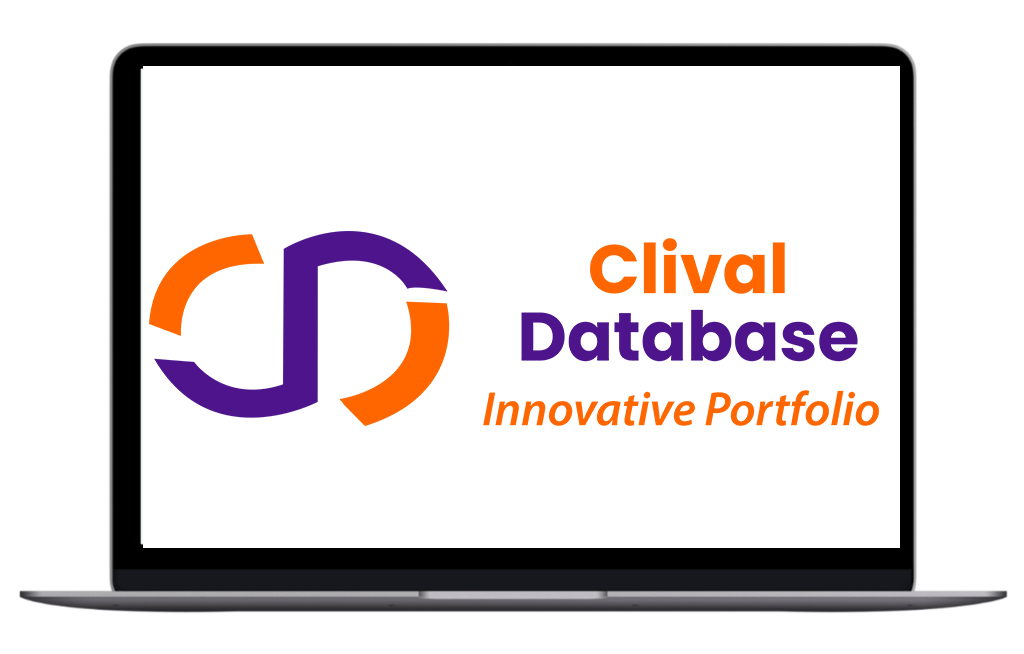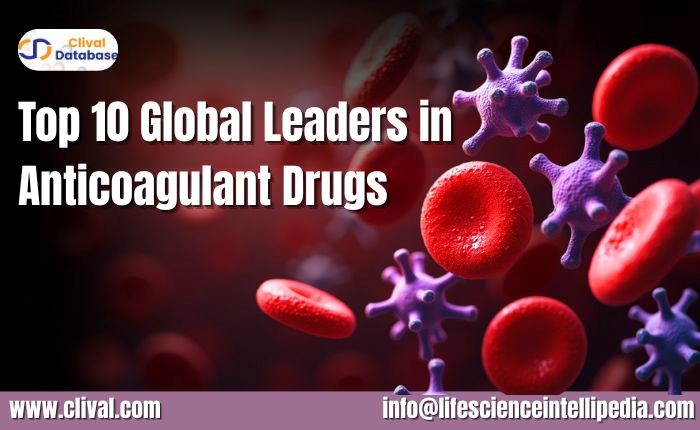Top 10 Global Leaders in Anticoagulant Drugs: Brands & Manufacturers
The anticoagulant market is booming—fast. In 2024, the global market was estimated at USD 35.96 billion, and it’s on track to hit USD 47.10 billion by 2030, a steady 4.6 % compound annual growth rate (CAGR). Meanwhile, DOACs are rewriting the rulebook, with the DOAC segment valued at around USD 43.9 billion in 2023 and projected to more than double to USD 102.36 billion by 2034, an impressive 8 % CAGR.
Here’s what that means: traditional anticoagulants—like warfarin and LMWHs—still form the backbone of hospital and community care. But the market’s momentum is with the next-gen players: DOACs are rapidly gaining ground thanks to streamlined dosing, improved patient outcomes, and strong guideline support. As we’ll explore, the growing dominance of DOACs makes understanding the top 10 global anticoagulant leaders not only strategic—it’s essential.
Below, you'll find a quick-reference table followed by bite-sized profiles of each leading drug.
We’ll break down who they are, why they matter.
Top 10 Anticoagulant Drugs: A Quick Look
|
S. No. |
Drug |
Manufacturer |
Country |
|
1. |
Warfarin (Coumadin) |
Pfizer |
United States |
|
2. |
Apixaban |
Pfizer & Bristol Mayers Squibb |
United States |
|
3. |
Rivaroxaban |
Bayer | Johnson & Johnson |
Germany and United States |
|
4. |
Edoxaban |
Daiichi-Sankyo |
Japan |
|
5. |
Dabigatran |
Boehringer Ingelheim |
Germany |
|
6. |
Enoxaparin |
Sanofi Aventis |
France |
|
7. |
Dalteparin |
Pfizer |
United States |
|
8. |
Fondaparinux |
GSK |
United Kingdom |
|
9. |
Bivalirudin |
Novartis |
United States |
|
10. |
Argatroban |
Mitsubishi |
Japan and United States |
Warfarin (Coumadin) — Pfizer
Warfarin is the veteran in the anticoagulant space. Decades before “next-gen” blood thinners showed up, Coumadin became the default prescription across hospitals and clinics. Its secret? Proven efficacy, broad adoption, and low cost. Even today, in many markets, it remains the backbone therapy against clot-related risks.
But leadership doesn’t always mean glamour. Warfarin comes with constant INR monitoring, strict dosing, and plenty of drug–food interactions. Patients often complain; doctors still prescribe. Why? Because it works, it’s cheap, and in resource-limited healthcare systems, it’s still the most accessible option.
Why It’s a Leader
- Legacy adoption: Warfarin has been trusted for more than half a century.
- Global reach: Available in almost every healthcare system, often through generics.
- Price advantage: Keeps it competitive despite the rise of DOACs like Eliquis or Xarelto.
Apixaban (Eliquis) — Pfizer & Bristol-Myers Squibb
Apixaban didn’t just enter the anticoagulant market—it redefined it. Known by its brand name Eliquis, this direct oral anticoagulant (DOAC) became the go-to option in cardiology guidelines worldwide. Unlike its older cousin Warfarin, Apixaban doesn’t force patients into endless blood tests or meal restrictions. It’s clean, predictable, and built for modern healthcare.
Hospitals and physicians love it because it reduces the headache of monitoring. Patients love it because it feels like freedom. And payers? They’ve had to adapt, because despite being pricier, the reduction in stroke risk and hospitalization costs makes it hard to ignore.
Why It’s a Leader
- Guideline-backed: Recommended across cardiology associations for atrial fibrillation and thromboembolism prevention.
- Patient-friendly: No constant INR monitoring or dietary restrictions.
- Market traction: One of the fastest-growing anticoagulants globally, especially in aging populations with rising cardiac disease.
Rivaroxaban (Xarelto) — Bayer & Johnson & Johnson
If Apixaban is the sleek disruptor, Rivaroxaban (Xarelto) is the heavyweight. Backed by Bayer and Johnson & Johnson, this DOAC has built one of the widest global footprints in anticoagulation.
Its secret isn’t just in performance—it’s in versatility. Xarelto covers a broad set of indications, from atrial fibrillation to deep vein thrombosis, pulmonary embolism, and even extended secondary prevention.
That breadth translates into prescription dominance. Physicians lean on it because it fits multiple patient profiles. Regulators keep approving new uses. And thanks to the Bayer–J&J partnership, distribution is strong across the U.S., Europe, and emerging markets.
Why It’s a Leader
- Global reach: One of the most prescribed anticoagulants worldwide.
- Indication diversity: Treats and prevents multiple clot-related conditions, not just atrial fibrillation.
- Partnership strength: Backed by two pharma giants, giving it marketing, regulatory, and access muscle.
Edoxaban (Savaysa / Lixiana) — Daiichi Sankyo (Japan)
Edoxaban is the quieter specialist in the DOAC lineup. Known commercially as Savaysa or Lixiana, it hasn’t chased the loudest headlines — instead, it carved out strong regional traction (especially in Japan and parts of Asia) and found life in niche indications where adoption patterns differ from the U.S. and Western Europe.
The result: a reliable player with strategic pockets of influence rather than blanket dominance.
When the market shifts, these pockets become opportunity hotbeds. A drug that’s regionally dominant can be easier to partner with, license, or extend into adjacent indications — if you know where to look.
Why it’s a leader
- Regional strength: High uptake in Japan and selected Asian markets where local guidelines and prescriber habits favor it.
- Niche indications: Used in targeted clinical settings that larger DOACs don’t always prioritize.
- Strategic positioning: Less noisy market share, but deep, repeatable use in defined cohorts.
Dabigatran (Pradaxa) — Boehringer Ingelheim (Germany)
Dabigatran arrived early in the DOAC era and stayed credible. Branded as Pradaxa, it was one of the first alternatives to warfarin that clinicians actually trusted—safety data held up, and long-term outcomes were persuasive. It didn’t just win headlines; it changed prescribing habits where safety margins mattered most.
Physicians reach for Pradaxa when they want a well-characterized risk profile and predictable anticoagulation without constant lab work. The molecule’s early-mover advantage gave Boehringer Ingelheim durable clinical credibility, and that credibility still translates into steady use across several indications.
Why it’s a leader
- Early entrant advantage: One of the first DOACs to demonstrate robust trial results.
- Proven safety record: Numerous studies reinforced its risk–benefit balance.
- Clinical trust: Preferred in scenarios where clinicians prioritize established safety data.
Enoxaparin (Lovenox / Clexane) — Sanofi-Aventis (France)
If you want a foot in every hospital supply closet, start with enoxaparin. Branded as Lovenox or Clexane, this low-molecular-weight heparin (LMWH) is the go-to for perioperative prophylaxis, acute coronary syndromes, and inpatient DVT prevention.
It isn’t glamorous; it’s indispensable. That’s the difference between a blockbuster and a hospital staple — one wins headlines, the other pays the bills.
Enoxaparin’s strength is operational: reliable dosing, clear clinical protocols, and entrenched placement on formularies. Because it’s used inside hospitals and during procedures, procurement cycles and supplier reliability matter more than flashy marketing. Supply interruptions or API price swings directly hit budgets and patient care.
Why it’s a leader
- Hospital staple: Standard of care across perioperative and inpatient settings.
- Operational reliability: Predictable protocols that clinicians trust.
- Scale: Large, steady institutional demand keeps it commercially resilient.
Dalteparin (Fragmin) — Pfizer (United States)
Think of Dalteparin (Fragmin) as the quiet specialist hospitals call when oncology patients need predictable, peri-treatment anticoagulation. It isn’t a consumer brand; it’s an institutional workhorse. Used widely for cancer-associated thrombosis and perioperative prophylaxis, Fragmin’s value is operational and clinical — it keeps protocols simple and risk manageable in high-stakes settings.
Why it’s a leader
- Oncology focus: Deeply embedded in cancer prophylaxis where clot risk is high.
- Clinical legacy: Long track record in hospitals and oncology centers builds clinician trust.
- Formulary presence: Frequently preferred in formularies that prioritize specialty indications and protocol stability.
Fondaparinux (Arixtra) — GSK (United Kingdom)
Fondaparinux is the boutique specialist in the anticoagulant cupboard. Marketed as Arixtra, it’s a synthetic pentasaccharide—technically precise, clinically niche, and commercially steady.
It isn’t trying to replace DOACs at scale; instead, it dominates specific indications where a targeted mechanism and predictable profile matter most. Clinicians reach for it when simplicity of action and low monitoring burden are required, especially in orthopedics and select thromboprophylaxis settings.
Why it’s a leader
- Mechanistic clarity: A focused, synthetic design gives predictable pharmacology that specialists trust.
- Clinical niches: Used where its profile outperforms broader anticoagulants—think perioperative prophylaxis and certain high-risk patients.
- Commercial stability: Not flashy, but reliably present on formularies where niche efficacy beats mass adoption.
Bivalirudin (Angiomax) — The Medicines Company / Novartis (USA)
Bivalirudin, sold as Angiomax, isn’t built for the masses—it’s built for the cath lab. This IV direct thrombin inhibitor is the specialist’s tool, designed for percutaneous coronary intervention (PCI) and other acute hospital procedures where timing, precision, and safety margins are razor-thin. While oral anticoagulants win headlines, Bivalirudin quietly owns its space in procedural cardiology.
Why it’s a leader
- Procedure-specific edge: Ideal for PCI, offering rapid onset and offset—exactly what interventional cardiologists need.
- Hospital-centric: Usage is confined to critical care and high-acuity hospital settings, reinforcing its specialized role.
- Trusted by specialists: A legacy of clinical data and adoption in PCI keeps Angiomax relevant despite newer competitors.
Argatroban — Multiple Manufacturers (incl. Mitsubishi) — Japan / USA
Argatroban sits in the anticoagulant landscape as a problem-solver for heparin-induced thrombocytopenia (HIT)—a dangerous condition where the standard therapy, heparin, can no longer be used. Unlike the blockbuster DOACs, Argatroban doesn’t chase scale. Its strength lies in reliability during rare but critical scenarios. For hospitals, it’s the safety net: when HIT shows up, Argatroban is the go-to option.
Why it’s a leader
- Niche but essential: Few drugs are indicated for HIT. Argatroban’s position is secure because it fills a life-saving need.
- Multiple vendors, steady access: Produced by companies in both Japan and the U.S., ensuring diversified supply for global hospitals.
- Hospital confidence: Its IV formulation and proven efficacy in HIT cases make it a staple in specialist formularies.
Conclusion
The anticoagulant market tells a clear story: legacy drugs like warfarin and LMWHs hold the backbone, while DOACs dominate growth curves.
Power is concentrated among repeat players—Pfizer, BMS, Bayer, J&J, and Daiichi Sankyo—leaving little room for outsiders. The most actionable signals? Patent expiries, niche-indication trials, and API supply vulnerabilities.
Book a demo to run a custom competitor & licensing scan.
Frequently Asked Questions

Optimize Your trial insights with Clival Database.
Are you exhausted from the uncertainty of trial insights pricing? Clival Database ensures the clarity in the midst of the global scenario for clinical trials to you.Clival Database is one of the best databases that offers an outstanding number of clinical trial data in terms of 50,000+ molecules and from primary regulatory markets as well as new entrants like Indian and Chinese markets.
Elevate your trial success rate with the cutting-edge insights from Clival database.
Check it out today and make more informed sourcing decisions! Learn More!







